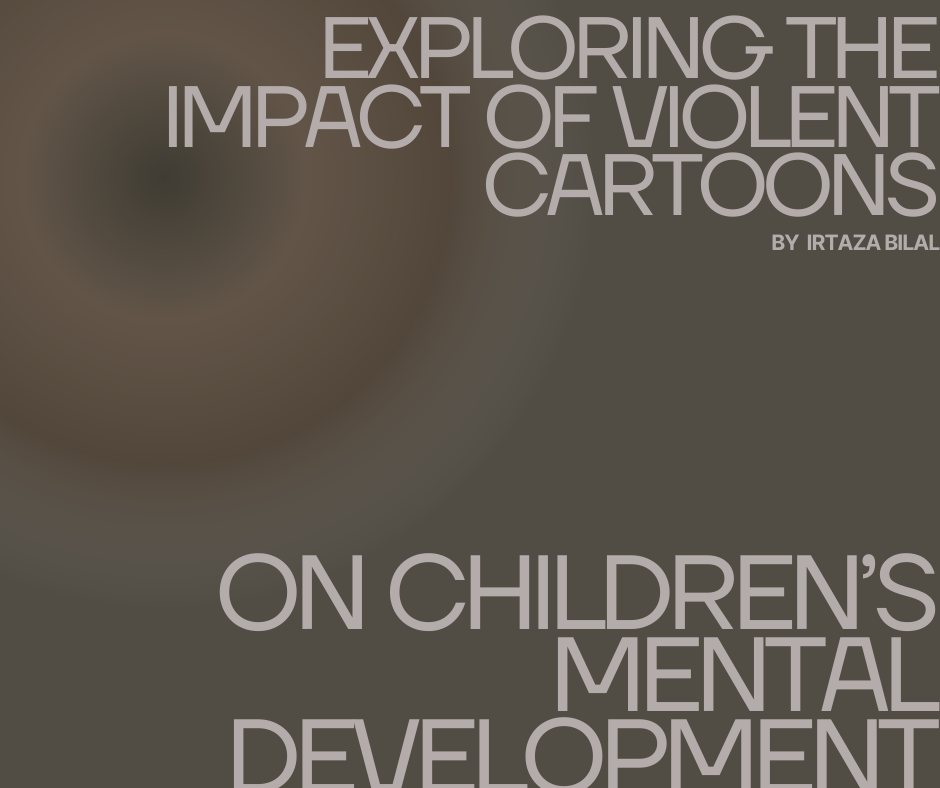In today’s fast-paced digital age, where screens dominate our daily lives, children are exposed to a vast array of content. Among this content, animated cartoons have long held a special place in a child’s heart. However, not all cartoons are created equal. The prevalence of violent cartoons has raised concerns about their impact on the mental development of children.
#ChildrensMentalHealth #Parenting #ViolentCartoons #MediaImpact
The Allure of Animated Violence
Cartoons featuring intense action sequences, over-the-top battles, and larger-than-life characters have become a staple in children’s programming. Shows like “Tom and Jerry,” “Power Rangers,” or “Dragon Ball Z” have captivated young audiences for generations. Yet, the question remains: do these vivid portrayals of violence have an influence on a child’s psyche?
Understanding the Impact
Before we dive into the effects, it’s crucial to acknowledge that the relationship between violent cartoons and children’s mental development isn’t black and white. Several factors come into play:
#MediaLiteracy #ChildhoodDevelopment #CartoonViolence
- Cognitive Development
On one hand, violent cartoons can stimulate a child’s cognitive development. They expose children to complex storylines, problem-solving scenarios, and imaginative worlds. Watching characters face challenges and find creative solutions can encourage critical thinking.
- Emotional Desensitization
On the other hand, the constant exposure to violence can lead to emotional desensitization. Children may become desensitized to real-world violence and, in some cases, mimic aggressive behavior.
- Sleep and Anxiety
Excessive viewing of violent cartoons, often late at night, can disrupt a child’s sleep patterns, leading to increased anxiety and stress.
- Gender Stereotypes
Many violent cartoons perpetuate gender stereotypes. Boys often see themselves as the heroes who use violence to solve problems, while girls may feel limited in their roles.
#ParentalGuidance #ChildDevelopment #MediaInfluence
Balancing Act: Parental Involvement
The key to navigating this complex landscape is parental involvement. Parents can play a significant role in mitigating the potential negative effects of violent cartoons. Here are a few strategies:
- Set Limits
Establish time limits on screen time, ensuring a healthy balance between TV and other activities like outdoor play, reading, and creative pursuits.
- Monitor Content
Take an active interest in what your child is watching. Many streaming platforms offer parental controls to restrict access to violent content.
- Encourage Discussion
Engage in open conversations with your child about what they see on screen. Help them distinguish between fiction and reality.
- Offer Alternative Choices
Introduce your child to age-appropriate, educational, and non-violent shows that can stimulate their creativity and knowledge.
#ParentingTips #ScreenTime #HealthyChildhood
Conclusion: A Delicate Balance
Violent cartoons can have both positive and negative effects on a child’s mental development. While they can encourage critical thinking and problem-solving, they can also desensitize and promote aggressive behavior. The key is striking a balance and actively participating in your child’s media choices.
As we continue to navigate the digital age, it’s essential to be mindful of the content our children consume, and to remember that, ultimately, our guidance and involvement shape their mental development far more than any cartoon ever could.

